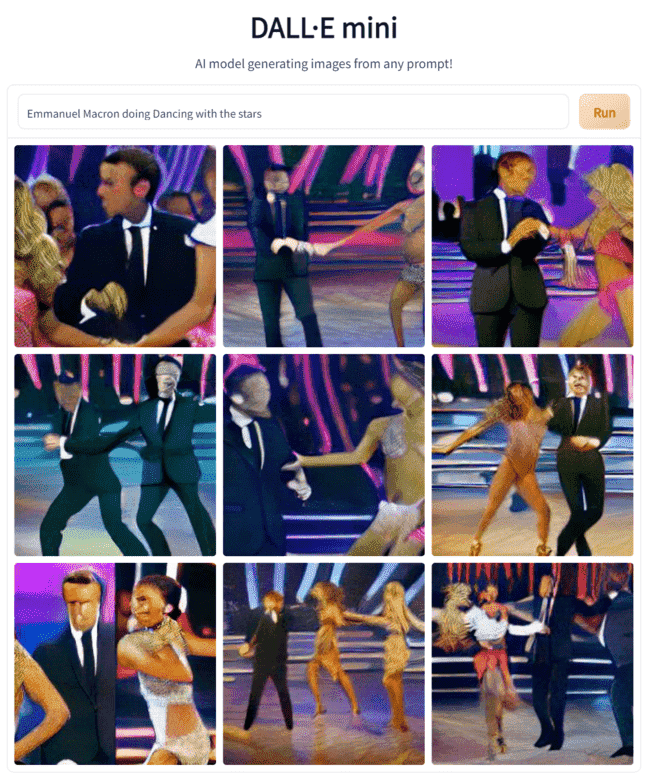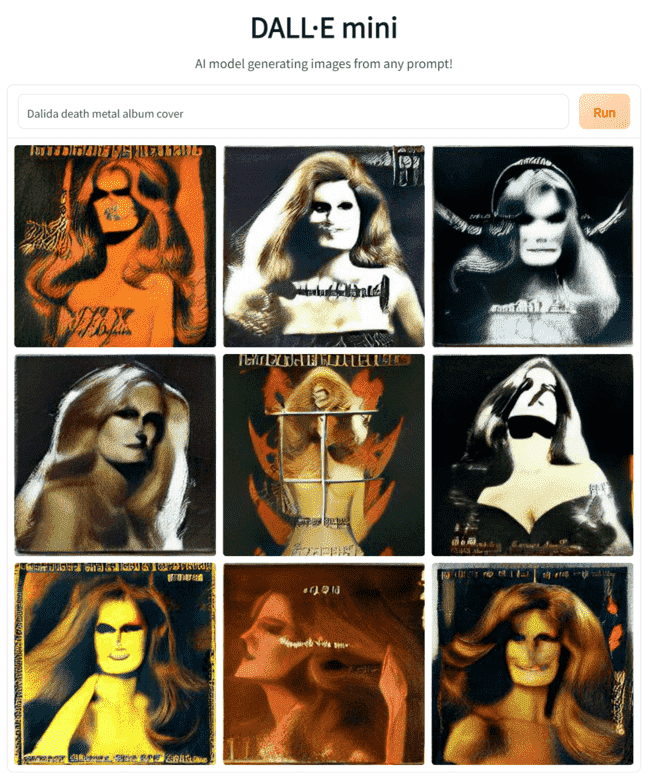If you hang out a bit on the internet, you couldn’t have missed it: Dall-E’s creations are everywhere. Distorted faces, far too intense colors, even distortion causing an effect of uneasiness… Sometimes horrific visions which are the fruit of artificial intelligence (AI for short), that is to say a supposedly intelligent computer calculation program , or in any case that drains the whole canvas to go from text to image. And in this case, there is no limit, except that of your imagination: the more precise your formulation, the more the AI creates an image with all the requested elements. And often, it’s very ugly and very funny. To try, That happens hereand you just have to enter a sentence, preferably in English, and let the machine run.
The Dall-E Mini program is the work of Boris Dayma, and the OpenAI company, specializing in artificial intelligence, co-founded by Elon Musk. Dall-E Mini is a program responsible for imaging a textual proposition, in a 12 billion parameter version of the GPT-3 language model, also created by OpenAI. This algorithm is based on so-called natural language, that is to say our mode of communication as humans, as opposed to formal languages such as computer languages, for example. Unveiled at the start of 2021, the AI program was a wild success in a few weeks on Twitter. Many Twitter, Discord or Reddit thread are dedicated to the images generated by Dall-E Mini. Originally, one of the main goals of OpenAI was to “give language models a better understanding of the everyday concepts that humans use to make sense of things,” according to the MIT Technology Review.
Why are the generated images so ugly?
Like many artificial intelligences, Dall-E learns through deep learning (or deep learning in VF): by processing so-called unstructured data (sound, images, human language, etc.), the program goes through a so-called “neural network” algorithm by mixing several layers of differentiated calculations. Clearly, the computer program tries to make links between several pieces of data, in the case of Dall-E between a sentence and its meaning. For example, we asked Dall-E to integrate Emmanuel Macron on the show Dance with the stars. The result is surprising.

But as we can see, the result is often more funny than realistic. While Dall-E has become a meme among memes, it above all helps to put the supposed superiority of artificial intelligence over the human brain into perspective. If AIs are developing exponentially, more or less mastered, we are far from I, Robot. For the time being, Dall-E Mini still serves as a scarecrow on the (limited) capacities of AIs and their ability to shape our future… But that’s without counting on its evolution, Dall-E 2.

Dall-E 2, or the specter of an AI more precise than ever
Last April, more than a year after the unveiling of Dall-E Mini, OpenAI announced the appearance of Dall-E 2, claiming that it could produce more realistic images than ever from text descriptions. According to its creators, Dall-E 2 has been described as a model that “can create original and realistic images and artwork from textual description. It can combine concepts, attributes and styles”. Since then, the software has been in beta testing with a few handpicked users, including scientist Ari Kouts, who reveals in a thread some ultra-realistic results of the application of AI.
Because unlike its “mini” version which gives absurd combinations, Dall-E 2 now understands the relationships between objects, but also retouch and edit images in a realistic way from a written description. According to its creators, the AI would even be able to replace part of the image with a mixture of other automatically generated images. Chills and amazement: Dall-E becomes an image maker, and is able to go further (and above all faster) than ordinary mortals.
Because of this realism, OpenAI has implemented strict rules. The team removed all violent content, deployed filters, and a policy against any form of nudity, conspiracies or political content. Because as the developers of OpenAI point out on their site, “without sufficient safeguards, models like Dall-E 2 could be used to generate a wide range of misleading content”. At the time of deepfakes and fake news, OpenAI prefers not to take any risks… And perhaps continue to communicate on its Mini version and its ugly images.

